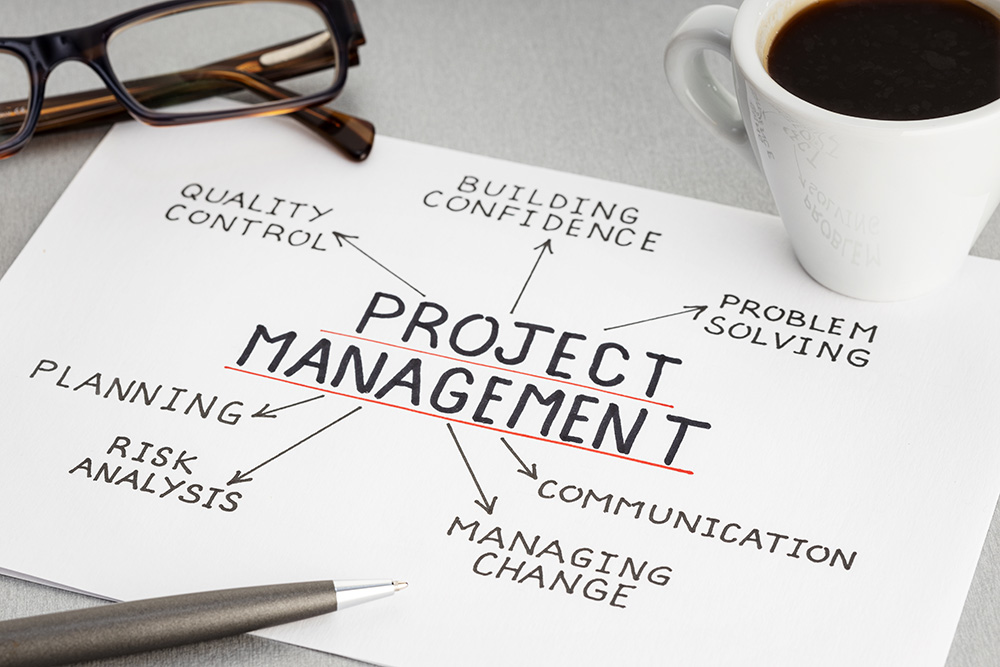A good project manager can make or break a project. The project manager is ultimately responsible in assessing the sanity and the overall health of the project through the project’s lifecycle. The project manager facilitates the project by acting as a happy medium between the client and the internal teams.
Thus it becomes important to hold project managers accountable.
Here are some metrics that can be used to evaluate project managers:
- On-time delivery: A project manager who consistently delivers projects on time is seen as effective and efficient.
- Budget management: A project manager who is able to keep a project within budget is seen as competent and able to make good decisions.
- Quality of deliverables: A project manager who produces high-quality deliverables is seen as a good leader and able to ensure that the project team is producing work to a high standard.
- Stakeholder satisfaction: A project manager who is able to keep stakeholders satisfied with the progress and outcome of a project is seen as effective at communication and relationship management.
- Team morale: A project manager who is able to maintain a positive and productive team environment is seen as a good leader and able to manage team dynamics effectively.
- Risk management: A project manager who is able to identify and mitigate potential risks to the project is seen as proactive and able to make good decisions under pressure.
- Change management: A project manager who is able to effectively manage changes to the scope, schedule, or budget of a project is seen as flexible and able to adapt to changing circumstances.
KPIs
At HyperTrends, we are formalizing the role of a Project Manager and will measure the project managers against the following metrics:
Some common KPIs for project managers include:
- On-time delivery rate: The percentage of projects delivered on time.
- Budget variance: The difference between the actual project budget and the original budget.
- Quality of deliverables: A measure of the overall quality of the project deliverables.
- Stakeholder satisfaction: A measure of how satisfied stakeholders are with the project manager’s performance.
- Team morale: A measure of how positive and motivated the project team is.
- Risk management effectiveness: A measure of how well the project manager has identified and mitigated risks to the project.
- Change management effectiveness: A measure of how well the project manager has managed changes to the project scope, schedule, or budget.
These KPIs can be tracked over time to see how the project manager is performing and to identify areas for improvement.
On-Time Delivery Rate

On-time delivery rate is a measure of the percentage of projects that are delivered on time. It is calculated by dividing the number of projects delivered on time by the total number of projects and expressing the result as a percentage.
For example, if a project manager has delivered 10 projects on time out of a total of 20 projects, the on-time delivery rate would be 50%.
On-time delivery is an important metric to track because it reflects the efficiency and effectiveness of the project manager and the project team. Projects that are delivered on time are more likely to meet the needs of stakeholders and to be successful.
There are many factors that can impact a project’s on-time delivery rate, such as the complexity of the project, the availability of resources, and the effectiveness of the project management process. Project managers can use this metric to identify areas where they may need to improve their performance or make adjustments to the project plan.
Budget Variance
Budget variance is a measure of how much the actual project budget differs from the original budget. It can be calculated by subtracting the original budget from the actual budget and expressing the result as a percentage of the original budget.
For example, if the original budget for a project was $100,000 and the actual budget ended up being $110,000, the budget variance would be 10%. This means that the project ended up costing 10% more than the original budget.
A positive budget variance (e.g., 10% in the example above) indicates that the project ended up costing more than the original budget, while a negative budget variance (e.g., -10%) indicates that the project ended up costing less than the original budget.
Budget variance is an important metric to track because it can provide insight into the financial health of a project and help project managers identify areas where they may need to make adjustments to stay on track.
Quality of Deliverables
The quality of deliverables is a measure of the overall quality of the output produced by a project. It can be assessed by evaluating the extent to which the deliverables meet the specified requirements and expectations of the stakeholders.
There are many ways to measure the quality of deliverables, depending on the nature of the project and the specific requirements of the stakeholders. Some common methods include:
- Defect density: The number of defects per unit of work (e.g., defects per thousand lines of code).
- Customer satisfaction: A measure of how satisfied customers are with the deliverables produced by the project.
- User experience: A measure of how well the deliverables meet the needs and expectations of the users.
- Conformance to standards: A measure of how well the deliverables conform to relevant industry standards or regulations.
Tracking the quality of deliverables is important because it helps project managers ensure that the project is producing high-quality output that meets the needs of the stakeholders. It can also help identify areas where the project team may need to improve their performance or make changes to the project plan.
Stakeholder Satisfaction
Stakeholder satisfaction is a measure of how satisfied stakeholders are with the progress and outcome of a project. It is an important metric to track because it reflects the perceived value of the project to the stakeholders and helps identify areas where the project team may need to improve their performance.
There are many ways to measure stakeholder satisfaction, including:
- Surveys: Stakeholders can be asked to complete a survey or questionnaire to rate their satisfaction with the project and its outcomes.
- Interviews: Stakeholders can be interviewed one-on-one or in small groups to gather more detailed feedback on their satisfaction with the project.
- Focus groups: Stakeholders can be brought together in a focus group setting to discuss their satisfaction with the project and provide feedback.
- Online reviews: Stakeholders can be encouraged to leave online reviews or ratings of the project and its outcomes.
- Observations: Stakeholder satisfaction can be observed through their behavior and interactions with the project team.
It is important to regularly assess stakeholder satisfaction throughout the project to ensure that the project is meeting the needs and expectations of the stakeholders. This can help the project team make adjustments as needed to improve the project and increase stakeholder satisfaction.
Team Morale

Team morale is a measure of the overall positivity and motivation of the project team. It is an important factor in the success of a project because a team with high morale is more likely to be productive, motivated, and engaged in the work.
Maintaining high team morale is the responsibility of the project manager and the leadership team. They can take steps such as providing support and resources, recognizing and rewarding team members, and addressing any issues or concerns in a timely manner to help maintain a positive team environment.
Risk Management Effectiveness

There are several ways that a project manager can excel in risk management effectiveness:
- Identify risks early: A good project manager will be proactive in identifying potential risks to the project as early as possible. This can involve conducting a risk assessment at the beginning of the project and regularly reviewing and updating the risk register throughout the project.
- Develop contingency plans: A good project manager will develop contingency plans to mitigate potential risks to the project. This can involve identifying alternative approaches or resources that can be used if a risk materializes.
- Monitor risks closely: A good project manager will closely monitor identified risks to ensure that they are being effectively managed. This can involve regularly reviewing the risk register and taking action to mitigate any emerging risks.
- Communicate effectively: A good project manager will effectively communicate risks to the project team and stakeholders. This can involve providing regular updates on the status of identified risks and any actions being taken to mitigate them.
- Foster a culture of risk management: A good project manager will foster a culture of risk management within the project team by encouraging team members to identify and report potential risks and by promoting a proactive approach to risk management.
By following these best practices, a project manager can effectively manage risks to the project and help ensure its success.
Change Management Effectiveness
Change management is the process of identifying, evaluating, and implementing changes to the project in a controlled and systematic manner. Change management effectiveness is a measure of how well a project manager is able to manage changes to the project scope, schedule, or budget.
There are several ways that a project manager can excel at change management:
- Establish a clear process for managing changes: A good project manager will establish a clear process for managing changes to the project, including how to identify, evaluate, and implement changes. This can help ensure that changes are properly documented and that the impact of the changes is understood.
- Communicate effectively: A good project manager will effectively communicate changes to the project team and stakeholders. This can involve providing regular updates on changes and their impact, as well as explaining the reasons for the changes.
- Monitor and control changes: A good project manager will closely monitor and control changes to the project to ensure that they are aligned with the project goals and that the project stays on track. This can involve regularly reviewing the project plan and adjusting it as needed to reflect changes.
- Foster a culture of change management: A good project manager will foster a culture of change management within the project team by encouraging team members to identify and report potential changes and by promoting a proactive approach to change management.
By following these best practices, a project manager can effectively manage changes to the project and help ensure its success.
A great project manager is an asset to the team because they are able to effectively lead and manage the project, ensuring that it is delivered on time, within budget, and to a high standard. They are also able to foster a positive and productive team environment, which can contribute to the overall success of the project

